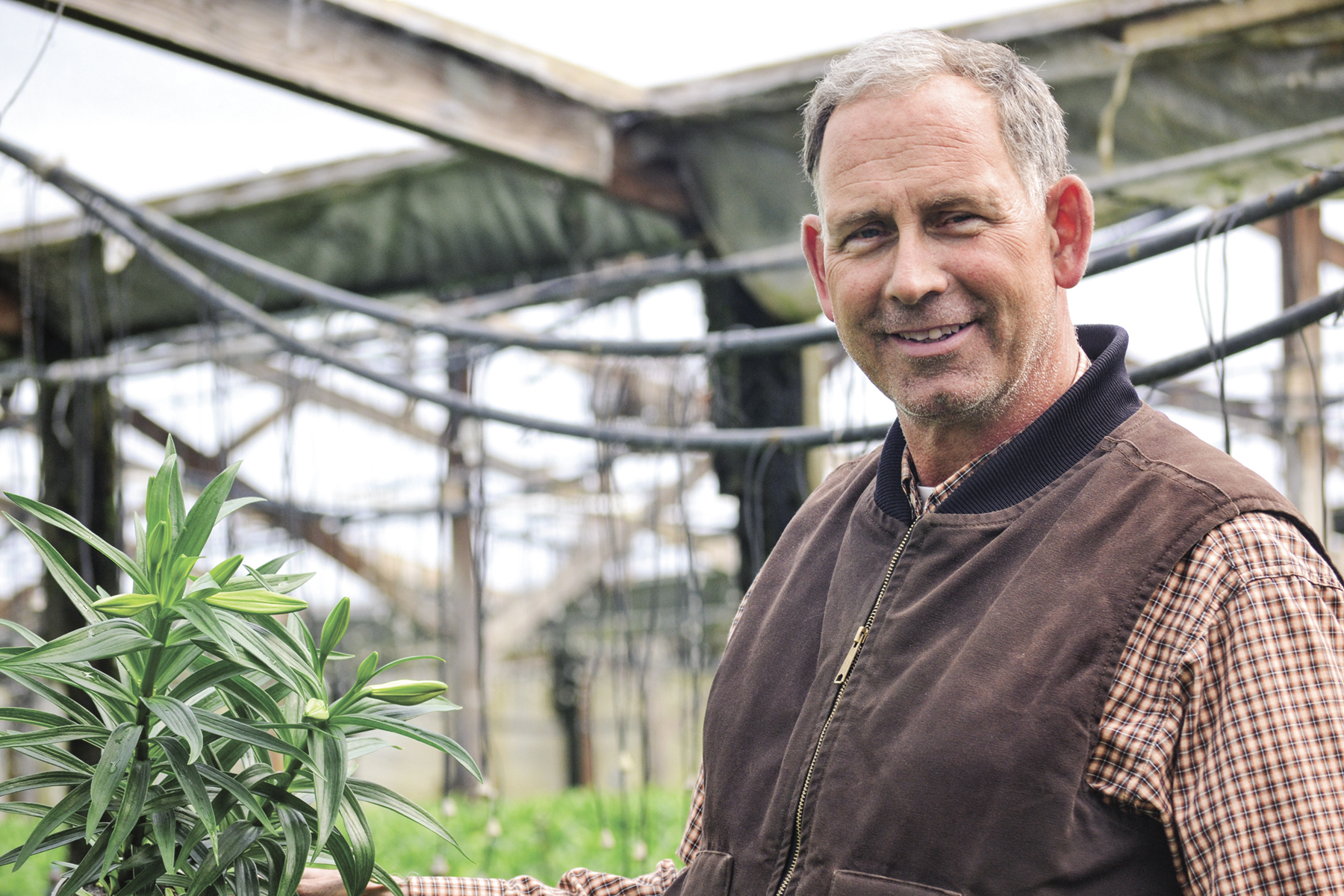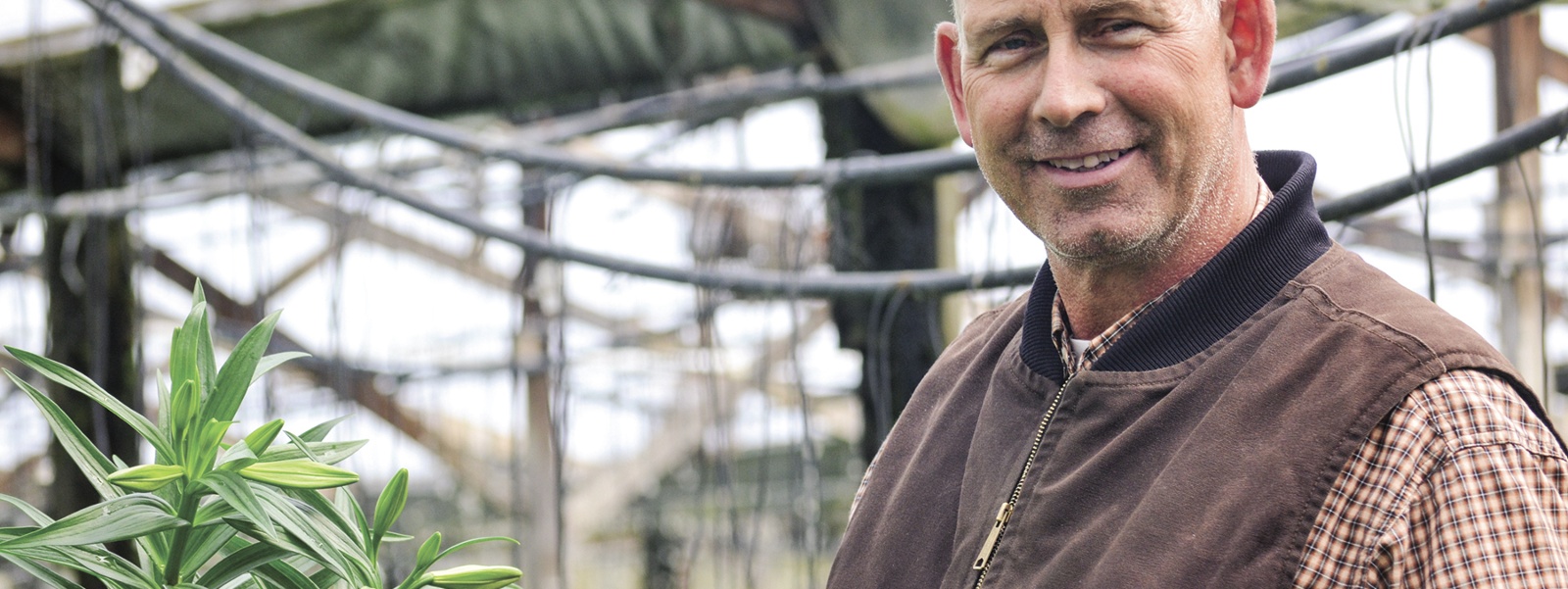From the Fields: Rob Miller, Del Norte County nursery operator and flower grower

Rob Miller
Photo/Courtesy of Rob Miller

By Rob Miller, Del Norte County nursery operator and flower grower
The lilies for Easter are all in greenhouses across the United States and are being forced and grown to flower for Easter. We have Easter flowering plants in the greenhouse at the moment—Easter lilies, calla lilies, Oriental lilies and hydrangeas. That stuff is all coming along just fine. The flowers in the greenhouse are about 1 and 2 inches in length, so they have a ways to go. We’re keeping the heat on the lilies and getting them prepared and ready to ship. Deliveries will probably start around April 7.
Easter this year is April 20, which is relatively late from an Easter-date standpoint. Last year, Easter was March 31, so that’s three weeks’ difference. Pushing lilies or plants earlier or holding them off later is a function of temperature. If you need them to be earlier, you have to force them at a warmer temperature. If you’re going to hold them a bit later, you can run the greenhouses a little cooler.
We also have lilies in the field. It’s winter and rainy, so we’re not doing much in the field at the moment.
The per capita consumption of lilies continues to go down because the population is going up. The number of lilies being sold is stable or slightly decreasing. There’s still a fair amount of production here. The number of lily growers over the last 40, 50 years has decreased significantly since the ‘60s, when there were 26 growers. Today, there are three, and I’m one of them.
In the mid-1960s, there were producers of lily bulbs in Oregon and California. Now, there are no growers left in Oregon. The last Oregon grower was in Brookings, and they quit last year. I don’t know why they quit, but I can guess. This is a very expensive game, so I would assume they could not see a future where they could make enough profit to replace aging buildings and equipment.




